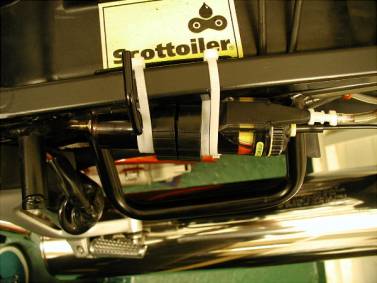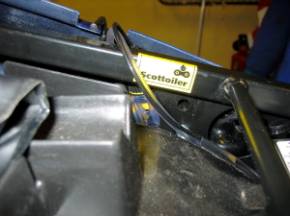1.0 Introduction
Instructions (issue 3.0) were compiled from the fitting of a standard capacity Scottoiler™ automatic chain lubricator, Mark 7 Kit, to a ’99 Honda CBR1100 XX FI Super Blackbird (UK specification) that presented a specific location for mounting the oil reservoir. Since making these instructions publically available, a consistent feature of feedback has been alternative locations for the reservoir.
After reviewing this feedback, and in light of the problem of breather pipe oil contamination progressively experienced with the original reservoir location and orientation, this supplemental document has been produced to illustrate other and, the author believes, better alternative mounting locations. Thanks go to those correspondents featured who have kindly given their permission for their photographs to be reproduced here.
2.0 Alternative Mounting Locations
Fitting instructions are only presented for the location given in section 2.1, as this is the one chosen by the author, and hence for which first hand knowledge exists. Subsequent sections present alternatives with only observations as inferred by the author from submitted photographs, comments and correspondence.
2.1 Author’s Location
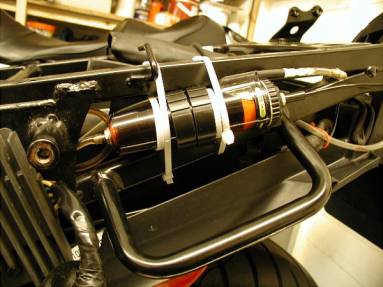
The advantages of this location are that the reservoir is mounted the ‘right way up’, with the breather pipe at the upper end (note the oil level), so that oil contamination of this pipe does not occur. The flow rate adjuster knob is accessible through the seat cowl aperture by the lifting handle, so there is no need to remove the seat when making adjustments. This latter feature is considered the most useful aspect of this location. It also keeps the under seat and cowl storage areas free.
Mounting uses the reservoir body clamp to locate the reservoir in the crook of the upper and lower seat frame rails, and to ensure that the reservoir body is held far enough away from the frame, and clear of it, to allow the flow rate adjuster knob to operate fully. The reservoir body clamp is held securely against the frame using cable ties threaded so as to form a cradle around the outer faces of the reservoir body, at either end of the clamp, and around both the upper and lower frame rails. This arrangement means that the reservoir is not in direct contact with the frame, and hence will not suffer abrasion.
The oil feed pipe is fed behind the rectifier mounting back plate so that any heat from the rectifier itself does not affect it. In some countries the rectifier is mounted on the other side of the frame, so this consideration may be redundant in those cases.
The reservoir can
be filled, albeit that this is a little fiddly, by removing the seat
where the filler cap can be accessed between seat cowl and upper
frame rail. Due to the restricted space, it is
essential that the oil top-up bottle used has a suitable dispensing
pipe and nozzle, such as that supplied with the proprietary
ScottOiler™
product.
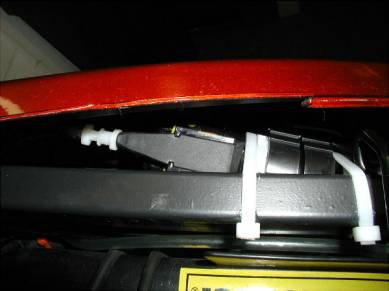
2.2 Nev’s Location
This was the location that prompted the author to relocate the reservoir of his own installation, and again, it is the ease with which the flow rate adjuster knob can be accessed without recourse to removing the seat that prompted this update.
Nev mounted his reservoir against the lower frame rail, and at the same angle, using the tube-mounting block from the ScottOiler™ installation kit. Although the mounting block is designed for round profile frames, it can be successfully used against the square section rail of the Blackbird. The frame-mounting block lifts the reservoir body clear of the frame, thus allowing the flow rate adjuster knob to be operated without fouling against the frame.
The oil feed pipe can only be taken past the outer face of the rectifier mounting plate, and hence close to the rectifier itself. This is because the reservoir body is held parallel to the frame making the crank necessary to route the pipe behind too severe. Nev does not have this problem as his model is for the Australian market where the rectifier is mounted elsewhere. If the reservoir is moved backwards, to allow enough pipe-cranking room, then the adjuster is harder to access as it is moved beyond the trailing edge of the seat cowl aperture.
As in the position presented in section 2.1, re-filling can be achieved by removing the seat. Access is possible between the seat cowl and the upper frame.
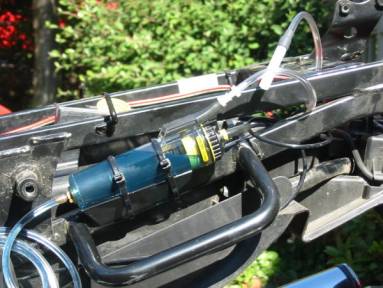
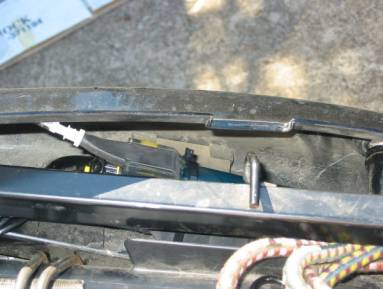
2.3 Geoff’s Location
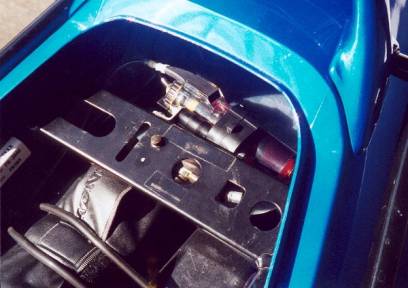
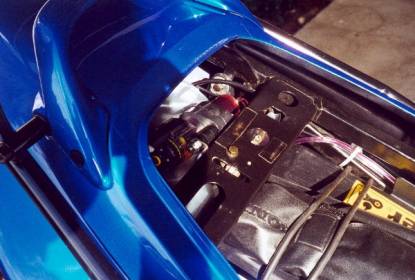
Geoff’s location necessitates drilling a mounting hole in the rear lip of the seat latching plate. This is where he has mounted the fixing screw for the right-angle bracket that he has used in conjunction with the body clamp. This arrangement is successful in avoiding oil contamination of the breather pipe due to the reservoir’s lateral orientation. However, some of the tail storage space is compromised with the reservoir in this location.
2.4 Harcan’s Location
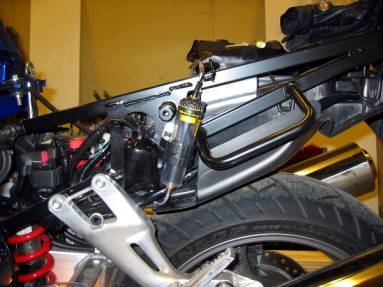
Harcan’s reservoir location is only applicable to those machines that have the rectifier located other than forward of the lifting handle, as is the case with his Swedish specification Blackbird.
The distinct advantage with this location is that the reservoir is mounted almost vertically, thus ensuring that oil cannot get into the breather pipe. The flow rate adjuster knob is accessible through the cowl aperture making adjustment possible without removing the seat.
Only a single mounting hole needs to be drilled in the frame plate just below the cowl securing point. The right-angle bracket is used in conjunction with the reservoir body clamp making the fitting very secure.
Re-filling is a little trickier than with the other locations considered as the filler hole in the reservoir faces the frame. The filler bottle dispensing tube needs to be carefully cranked into position to gain access.
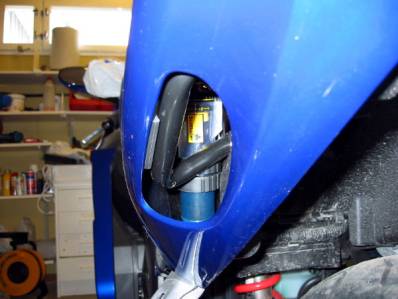
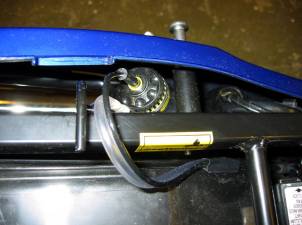
Filling procedure
|
|
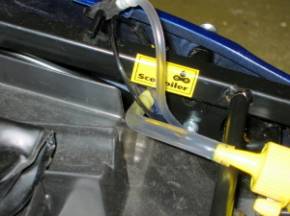 |
2.5 ScottOiler™’s Location
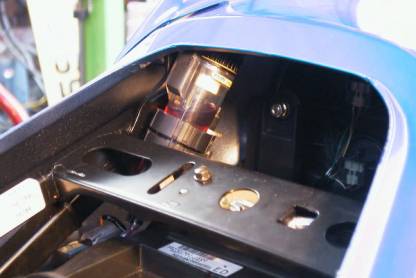
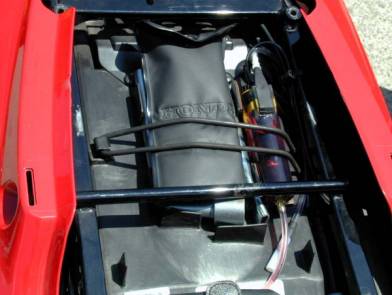
ScottOiler™ provided the above two photographs of recommended locations. These illustrate the ability to be able to mount the reservoir in either horizontal or vertical orientations. However, both these positions do use up scarce storage space, and necessitate seat removal for both re-filling and flow rate adjustment.

3.0 Contacting ScottOiler



